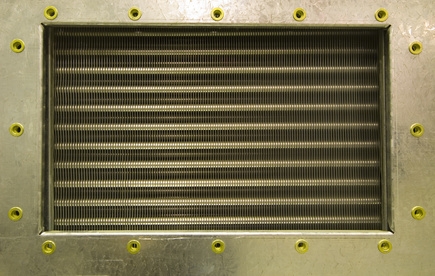
The function of an intercooler is to cool the intake charge from a turbocharger in an automobile. The goal of an intercooler is to provide maximum cooling to the intake charge, while providing the least amount of pressure drop. The two main types of intercoolers used in automotive applications are bar and plate intercoolers, and tube and fin intercoolers.
Bar and plate intercoolers offer generally superior heat rejection, can be easily made into a variety of size and shapes, and provide superior interior airflow compared to tube and fin designs. Since the intake tube sits flush with the core, no additional air turbulence is created. While being substantially heavier than tube and fin designs, bar and plate intercoolers are less susceptible to damage from debris.
Tube and fin designs are much lighter than bar and plate, and provide superior exterior airflow, which allows the radiator and any other engine coolers to operate cooler. While the exterior airflow is superior, the interior airflow is inferior to a bar and plate design since the intake charge flows into the open core as opposed to a flush tube. The high number of fins makes these intercoolers more susceptible to damage from road debris.
Both designs are adequate for intake charge cooling purposes. More important than intercooler core design, the intercooler and flow area must be matched to the specific cooling job. It is not simply a case of bigger is better. An overly large core will result in excessive pressure drop, which results in sluggish boost response.